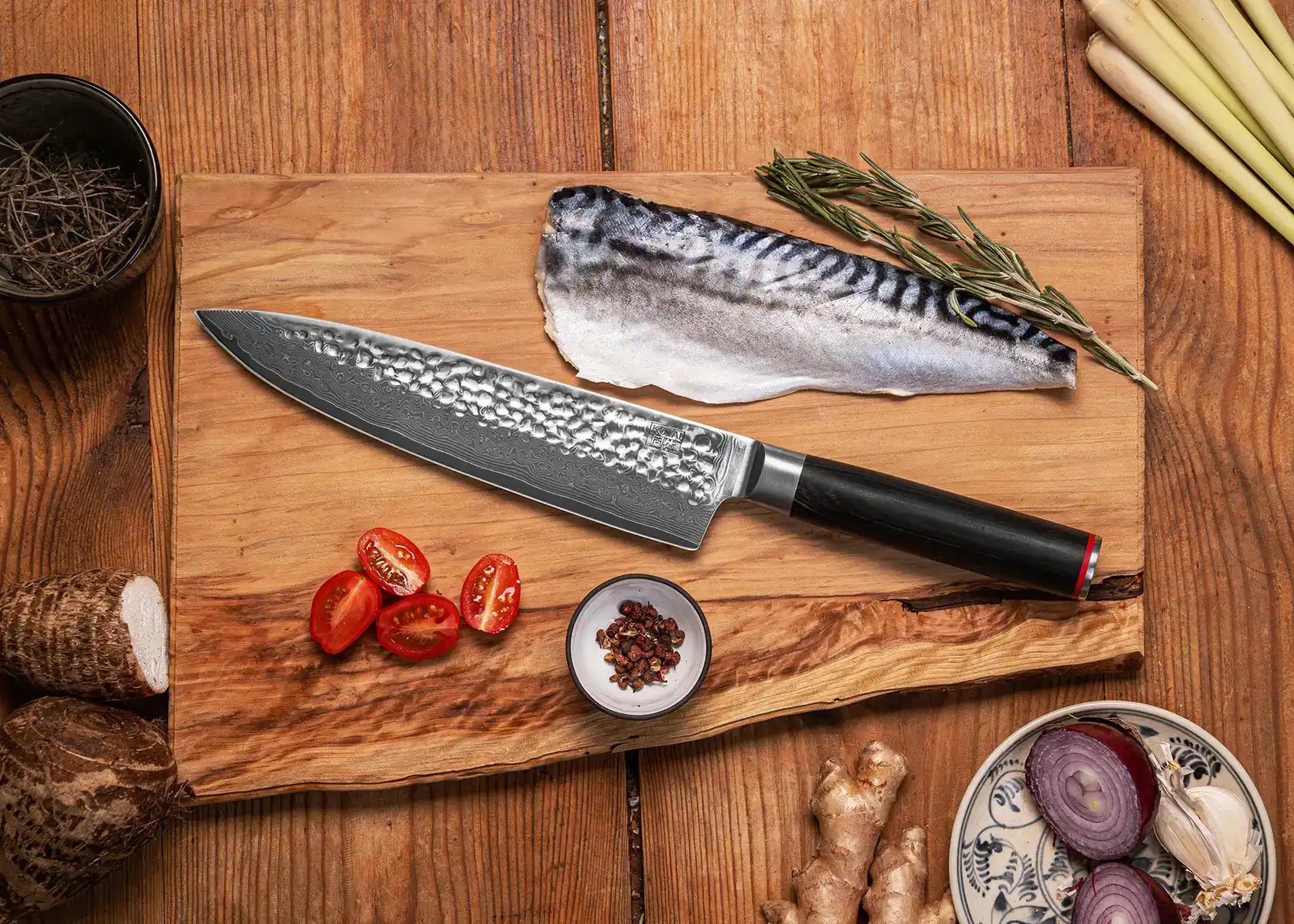For any kitchen professional, a Damascus cleaver knife is not just a tool, but an extension of their craft. Renowned for its unique appearance and superior performance, this knife has carved its niche in professional kitchens worldwide.
At the heart of culinary art is the Damascus cleaver knife, a symbol of power and precision. Known for its beautiful layered patterns and impressive durability, it traces its origins to the ancient methods of folding steel to enhance strength and performance. If you're a culinary expert, mastering this tool can elevate your kitchen skills to a whole new level.

What Makes a Damascus Cleaver Knife Superior?
One might wonder why a chef would choose a Damascus cleaver knife over a regular one. The answer lies in its construction and aesthetic. The distinct layers of steel not only make it a visual masterpiece but also provide exceptional edge retention and flexibility, making it ideal for a variety of kitchen tasks.
The intricate pattern that graces every blade stems from a combination of hard and soft steels, expertly layered during the forging process. This not only creates a striking pattern but also contributes to the knife's superior hardness, making it a vital tool for delicate cuts and heavy chopping alike.
Choosing the Perfect Damascus Cleaver Knife for Your Kitchen
When selecting a Damascus cleaver knife, factors like weight, balance, and handle comfort are critical. Professionals often prefer a balanced weight for easy maneuverability during extended use. The handle should provide a firm, comfortable grip to ensure safety and precision while cutting.
Moreover, for those interested in learning the history behind these magnificent blades, exploring resources such as Japanese knife history can offer depth and context, enriching your appreciation of the Damascus cleaver knife.
Maintenance and Care for Your Damascus Cleaver Knife
Proper care is paramount to preserving the beauty and functionality of your Damascus cleaver knife. Regular honing and appropriate washing techniques, like hand washing and thorough drying, will prevent rust and maintain the intricate patterns visible on the blade.
Storing your knife in a designated knife block or using a blade guard can protect both the knife and its surroundings. The combination of its sharpness and weight means it should be handled with care to avoid accidents and maintain its integrity.
Enhancing Your Culinary Skills with a Damascus Cleaver Knife
The versatility of a Damascus cleaver knife can enhance your culinary repertoire. From breaking down large cuts of meat to executing precise vegetable cuts, it remains an indispensable asset in the kitchen. For chefs looking to broaden their toolkit, investing in a Damascus cleaver knife proves rewarding.
For those still considering the addition of this cleaver to their kitchen, exploring the benefits of such knives, like in the Damascus boning knife and Damascus fillet knife, can provide insight into their unparalleled versatility.
Conclusion
A Damascus cleaver knife isnt just a purchase; its an experience. For the kitchen professional, it becomes a pivotal part of daily culinary endeavors. With meticulous care and consistent use, this knife will undoubtedly prove to be a lifelong companion in the culinary arts.

FAQ
Why are Damascus knives so expensive?
The cost reflects their craftsmanship, durability, and the aesthetic appeal of the layered steel pattern.
How do I maintain a Damascus cleaver knife?
Regular honing, proper washing, and immediate drying are essential for maintenance, along with secure storage.
Are all Damascus patterns the same?
No, different craftsmen use varied techniques, resulting in unique patterns, making each knife distinct.
This article contains affiliate links. We may earn a commission at no extra cost to you.


























